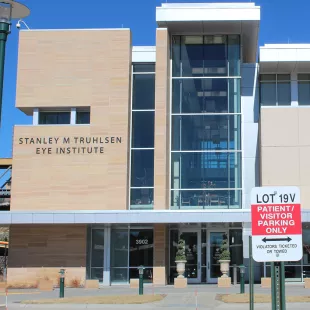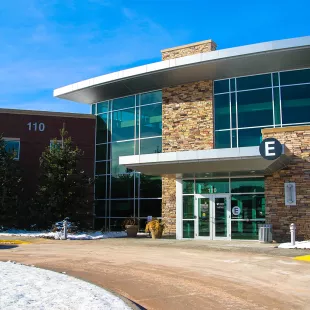Glaucoma involves increased pressure inside the eye, called intraocular pressure, or IOP. In the most common type, fluid in the eye faces more resistance when draining, causing higher pressure. This can harm the optic nerve and cause permanent vision loss. More than 3 million people in the United States suffer from glaucoma, and it’s the second leading cause of vision loss worldwide.
There are several forms of glaucoma, including:
Primary open-angle glaucoma: Most people with glaucoma have this form. It happens when aqueous fluid is blocked from flowing back out of the eye through the drainage system. Eye pressure increases slowly, damaging the optic nerve over time.
Angle-closure glaucoma: The colored part of the eye, called the iris, can sometimes block fluid from flowing freely and can block the drainage system. This can cause intermittent high eye pressure or damage to the optic nerve.
Acute angle-closure glaucoma: Causes a sudden rise in eye pressure, which can damage the optic nerve and lead to vision loss within hours. Symptoms may include nausea, vomiting, seeing halos around lights and eye pain.
Childhood glaucoma: It starts in infancy, childhood or adolescence and is rare. It often shows no symptoms like primary open-angle glaucoma. If untreated, it can cause blindness. Family history can increase the risk. Signs in infants include cloudy corneas, excessive tearing and an enlarged eye.
Nebraska Medicine glaucoma specialists have expertise in medical and surgical treatment of all forms of primary and secondary glaucoma. Our experts can help manage your glaucoma and ensure you retain as much of your vision as possible.
What to expect
Glaucoma is generally asymptomatic, but early treatment can help prevent severe vision loss. Because it can cause blindness, getting your eyes checked every year is important, especially if you are at a higher risk of developing glaucoma.
At your first visit, an ophthalmologist will identify what type of glaucoma you have and discuss treatment options available to you. The goal of glaucoma treatment is to lower your eye pressure to prevent or slow further vision loss. Ongoing monitoring and diagnostic testing are needed to watch for changes in the optic nerve.
Your provider will recommend treatment if the risk of vision loss is high. Treatment often consists of eye drops but can include laser treatment or surgery to lower the intraocular pressure in the eye. Glaucoma is a chronic disease that can be controlled but not cured.
For patients with significant visual impairment, we offer low vision rehabilitation to help you better navigate your world.
Why you should choose Nebraska Medicine
The Truhlsen Eye Institute is the only facility in the region with a full complement of ophthalmology subspecialists including cornea, retina, uveitis, neuro-ophthalmology, dry eye, glaucoma, ocular oncology and ocular plastic surgery. Our glaucoma specialists include fellowship-trained ophthalmologists who can handle the most complex glaucoma cases.
For patients with low vision due to glaucoma, we offer services through the Weigel Williamson Center for Visual Rehabilitation.
Our Locations
-

-

Truhlsen Eye Institute at Village Pointe Health Center
110 N 175th St.
Get Directions
Omaha, NE 68118
-
Why Make Nebraska Medicine Your Destination for Eye Care
Learn more about our top ranked facilities, care for the common to complex and dedication to clinical research.
View More